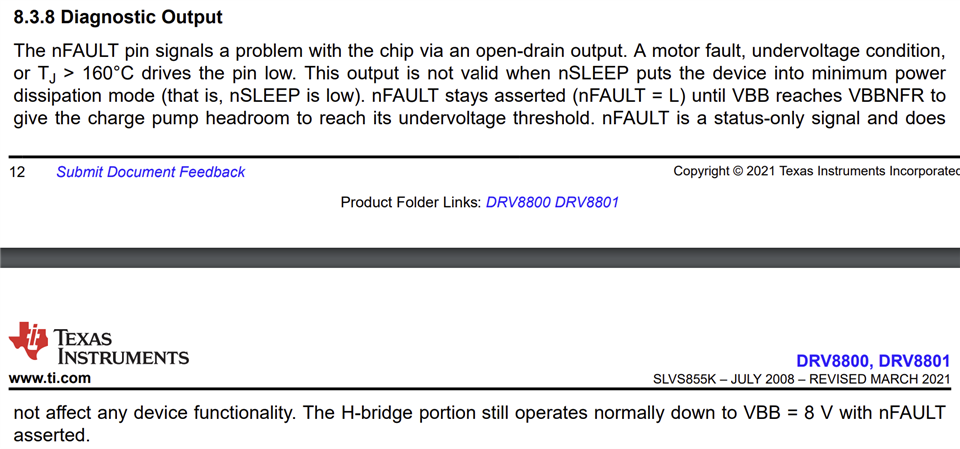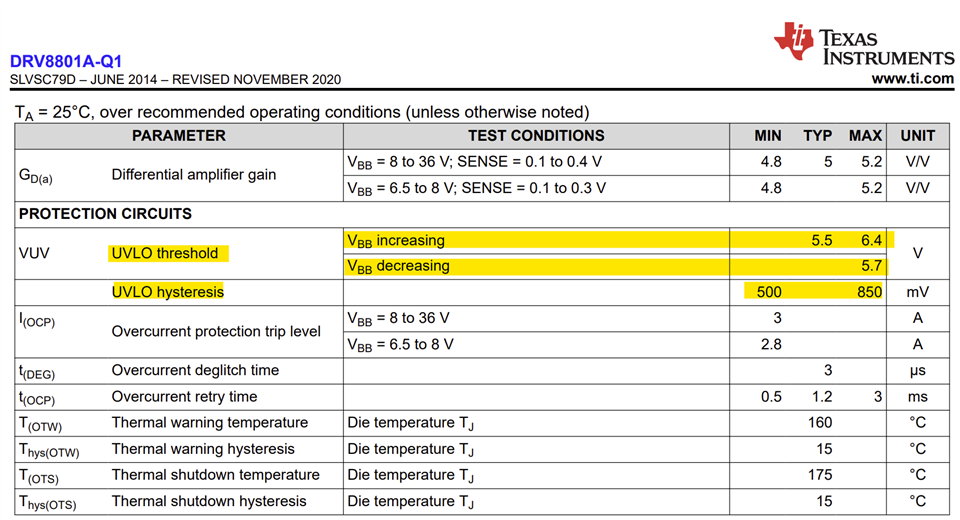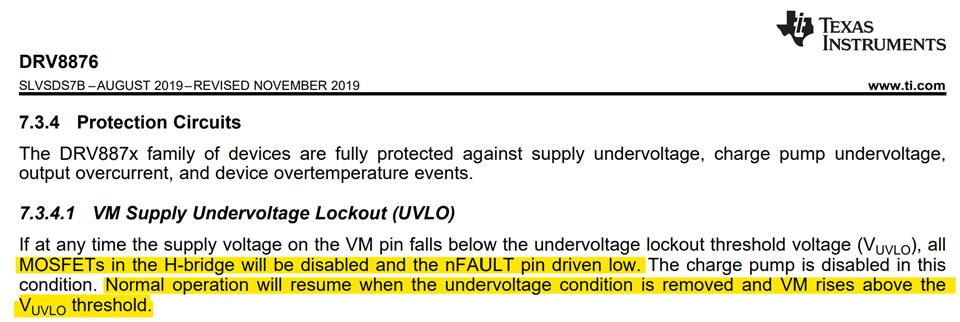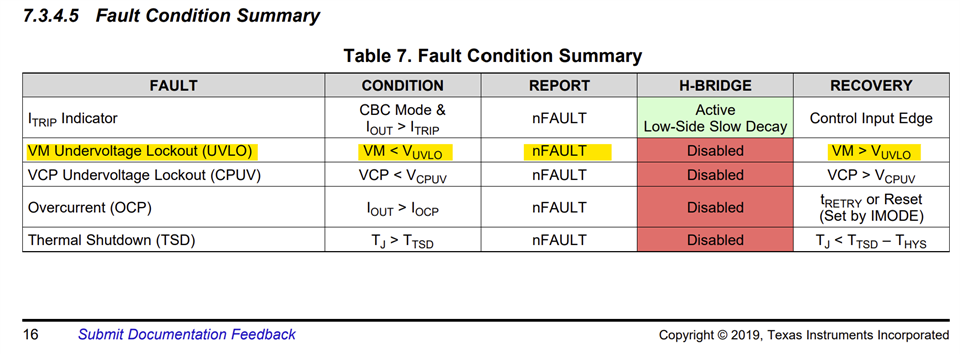Other Parts Discussed in Thread: DRV8870, DRV8251, DRV8251A, DRV8231, DRV8231A, DRV8876, DRV8876EVM,
Hi,
in the DRV8801's datasheet, i found that there's an UVLO for the VBB pin at around 6.5 ... 7.5V.
But the nFault indicates an undervoltage situation at much higher voltage. I measured this to be around 11.0V.
Could you tell me at what exact voltage that happens (on VBB pin) and if there's a way to change this behavior?
My problem is that i'm operating the chip at 12V. The supply however can be a bit lower, 11.5 ... 11.8V. Given this supply voltage, the chip can never recover from an undervoltage situation (nFault low) because VBBNFR (fault release) is at 12V, which our circuit may never reach.
Do you have a recommendation on how to handle this?
Could you recomment a chip which is as close as possible to DRV881 but does not have this behavior (or one where i could set the undervoltage thresholds...)?
Thanks a lot and best regards,
Gregor Dörig








